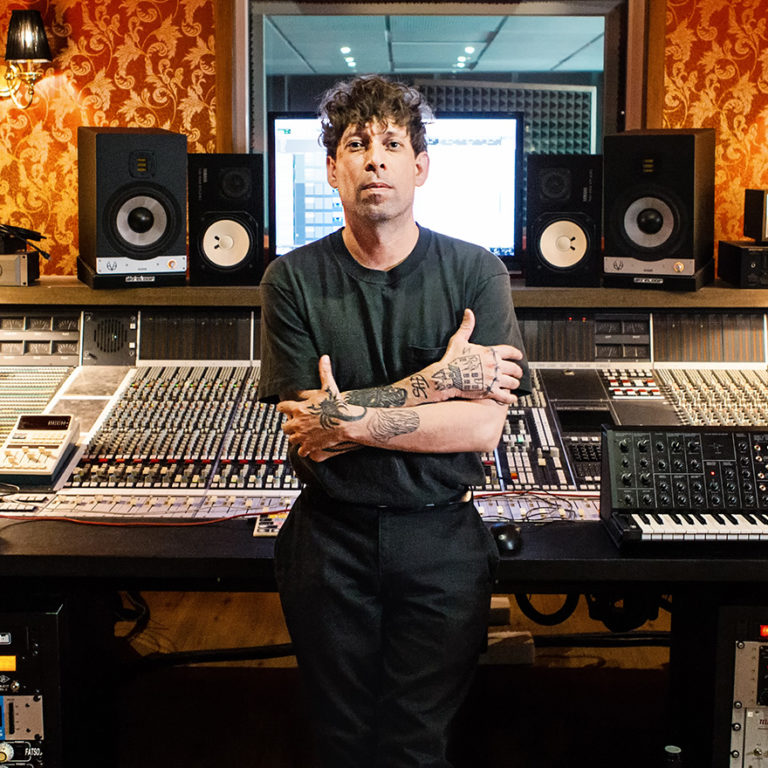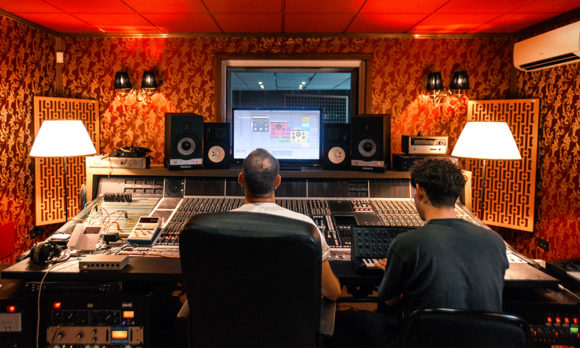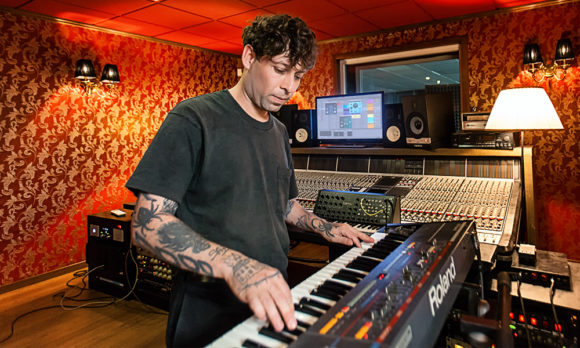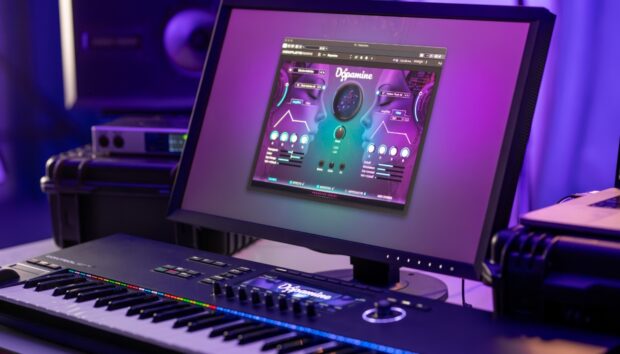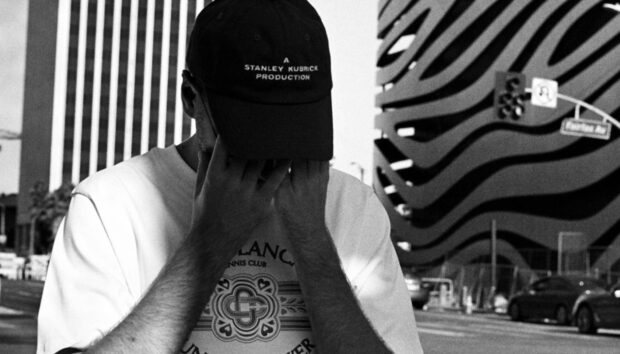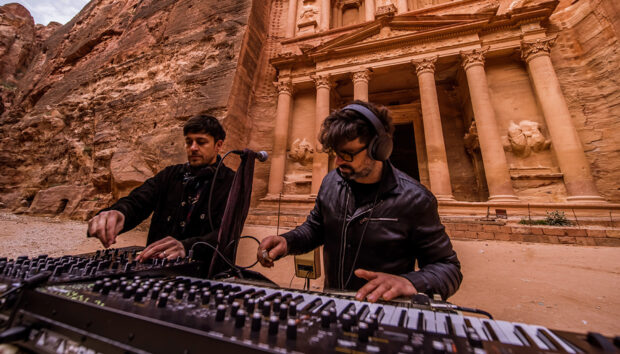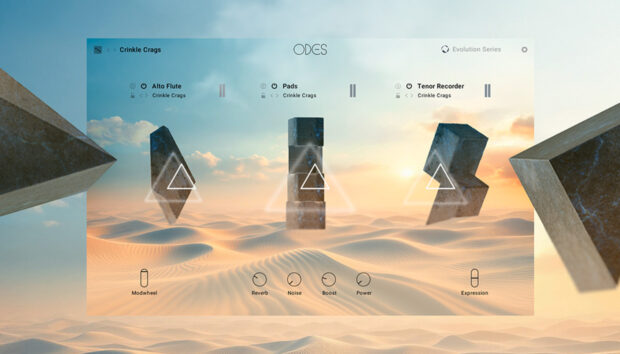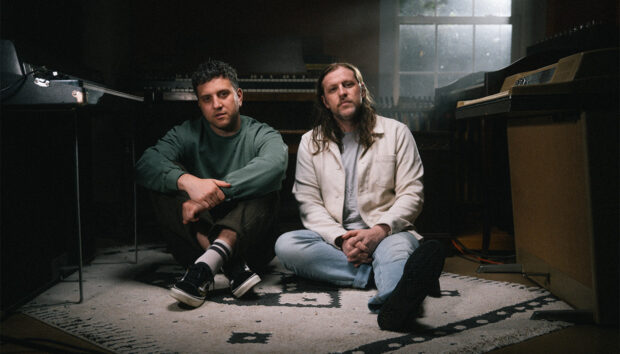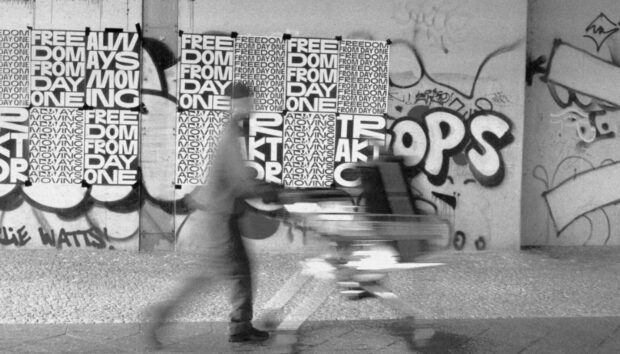The post-punk, industrial sound of Luis Vasquez’s work as The Soft Moon has resonated across the world since the release of his self-titled debut LP in 2010. Four albums deep into his career and his sonic identity has evolved from a more-krautrock inclined fusion, to the abrasive, up-front, and distorted sound of 2018’s Criminal.
Originally from Oakland California, Vasquez spent almost half of his time as The Soft Moon in Berlin, where an ever changing landscape shaped his writing, production and performance processes. Having recently just played a headline slot at the city’s leading club Berghain, Vasquez is making waves and moving back stateside, but not before spending time at his at the La Distilleria Recording Studio in Italy to put down some new tracks for his forthcoming LP.
Catching up with Vasquez we discuss his relationship with recording in Italy, get his thoughts on the evolution of his sound, and learn how he integrates software effects like CRUSH PACK into his new material.
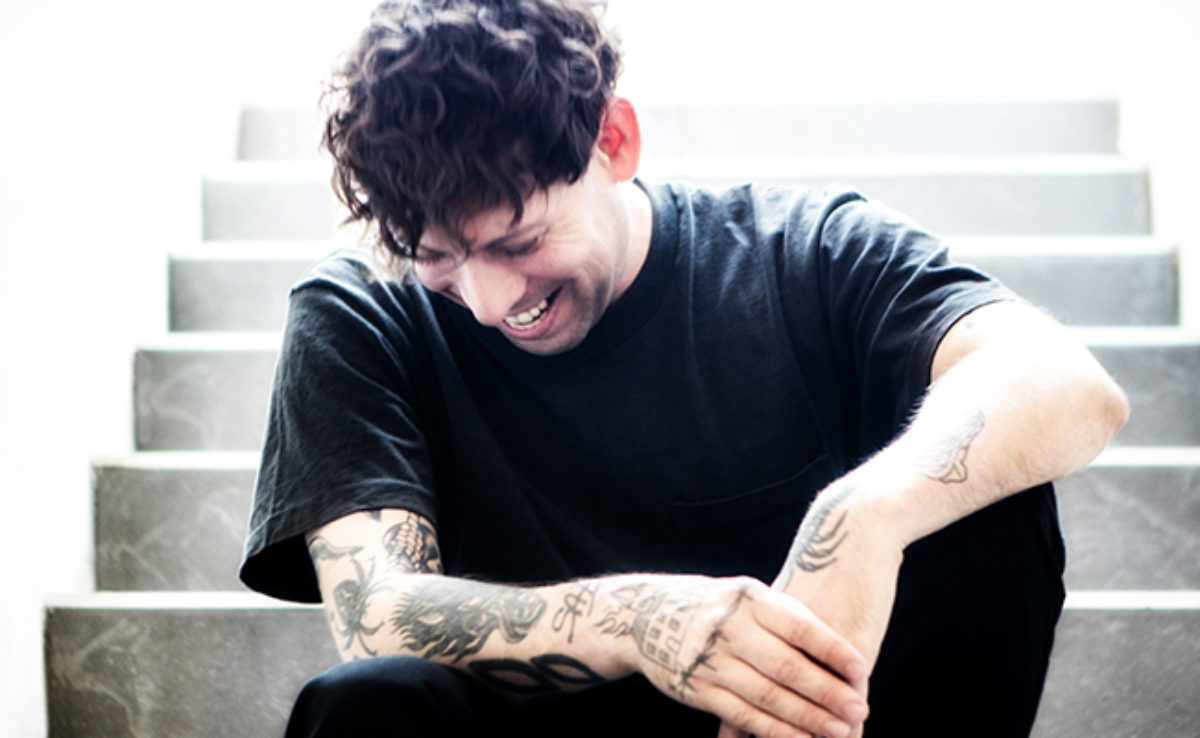
What brought you to Berlin in the first place, and can you tell us about your early experiences?
It wasn’t until the release of my second album Zeros where I found myself performing mostly in Europe. At that point it just felt right to relocate from Oakland, and more specifically to Berlin, since art and creativity tend to thrive there.
How come now is the right time to leave, and what is next for you?
It’s just a personal thing. It felt like the right time to return home after what seemed like a six year fairytale journey. I have the opportunity now to start reflecting and looking back upon my time away. It’s already starting to feel as if my life in Europe never existed. What’s next will be a future release so I can get back on the road and do what I know best.
What is it about the recording studio in Northern Italy that keeps pulling you back?
Prior to living in Berlin I spent about nine months in a small town near Venice focusing on my third album Deeper, followed by an unplanned two-week European tour supporting Depeche Mode. While out there I was introduced to Maurizio Baggio who would soon become the band’s permanent sound engineer. He operated a recording studio called Hate, then later La Distilleria Recording Studio in Bassano del Grappa where he currently works. Before this I only worked alone and felt uncomfortable bringing someone in so close to something I still consider extremely intimate. After working with Maurizio over time he gained an understanding on my vision. We had spent enough time together on the road getting to know each other on a personal level, that I felt comfortable enough to work closely with him in a studio environment.
How do you like to work here? What level are your demos at, and how do you record them? In your mind is everything already final, or is there room for experimentation?
There is always room for experimentation, however, there’s also a fine line before you take experimentation too far and risk losing the initial idea, moment, vision, and feeling of a piece of work. It definitely takes a level of maturity to know when to stop. In terms of what I bring to the studio, I’ve tried different approaches. I prefer to bring in completed solid compositions that just need some re-tracking, re-amping, and added live percussion and drums, on which I can sing at the top of my lungs. Basically a place where I can be loud. For my fourth release Criminal a lot of what I brought to the studio were ideas that weren’t completely arranged. I wanted to write and develop the majority of that album in a studio environment. Everything I had created before that had been written in apartments with many constraints, so I desperately needed to try a different approach.
Release-by-release, can you talk us through the evolution of your sound and production processes during your time in Berlin?
Criminal is my fourth and only album to be conceived in Berlin. Leading up to that were my first and second albums (The Soft Moon and Zeros) written in Oakland, followed by Deeper which was written in Venice. I went into creating The Soft Moon with knowing very little about recording with digital audio workstations, production, and mixing techniques. All I knew was how to play my instruments with a natural ability to compose. Before switching to Ableton I was only accustomed to using hardware to record; a BOSS BR-900CD digital recorder to be precise. With my second album I had become more interested in vintage analog drum machines and synthesizers.
We understand you’ve added some software effects and plug-ins to your chain. How are you working with them, and what have you learned?
As a heavy user of chorus, tremolo, phaser, and distortion I’ve recently integrated Mod and Crush packs into my collection of plug-ins. One thing I tend to do a lot is detune pretty much everything to add a bit of weirdness, un-easiness, and discomfort to my sounds. I love taking a basic melody and making it sound a bit off. Mod Pack’s Choral achieves exactly what I’m looking for in order to be consistent with my formula. One thing I’ve learned after spending time, specifically with the Mod Pack, is to approach the use of chorus in different ways to produce wide-stereo images that build a landscape of sound rather than just simply a chorus effect.
Distortion is something I didn’t use as much but it has increasingly become more prevalent in my sound over the years. I can never seem to get enough of creating textures within my music. Textures are a huge part of what I do, so the Crush Pack has been getting a lot of use with my current recordings.
Textures are a huge part of what I do, so the Crush Pack has been getting a lot of use with my current recordings.
Your vocal sound is quite unique and broad, ranging from the emotive. Can you tell us about your vocal processing techniques?
In the beginning, my approach was to completely bastardize my vocals, perhaps because I felt like I had nothing important to say, or that I didn’t know how to express my feelings with words. I started out using a $10 microphone I bought from a local store, of course I naturally progressed to an SM58 but I’ve come a long way since then. As of my last two albums, my go-to is a 1970s Electro Voice PL95A dynamic cardioid microphone with a super narrow pattern that allows me to stand right in front of the mixing console when tracking vocals, with very little to no bleed from the playback. This is important for me because I’ve always felt disconnected whenever tracking in a vocal booth. Some of the processing techniques used in the studio for my vocals would be to run amp simulations and multiple chorus effects in the same chain using plug-ins combined with outboard effects.
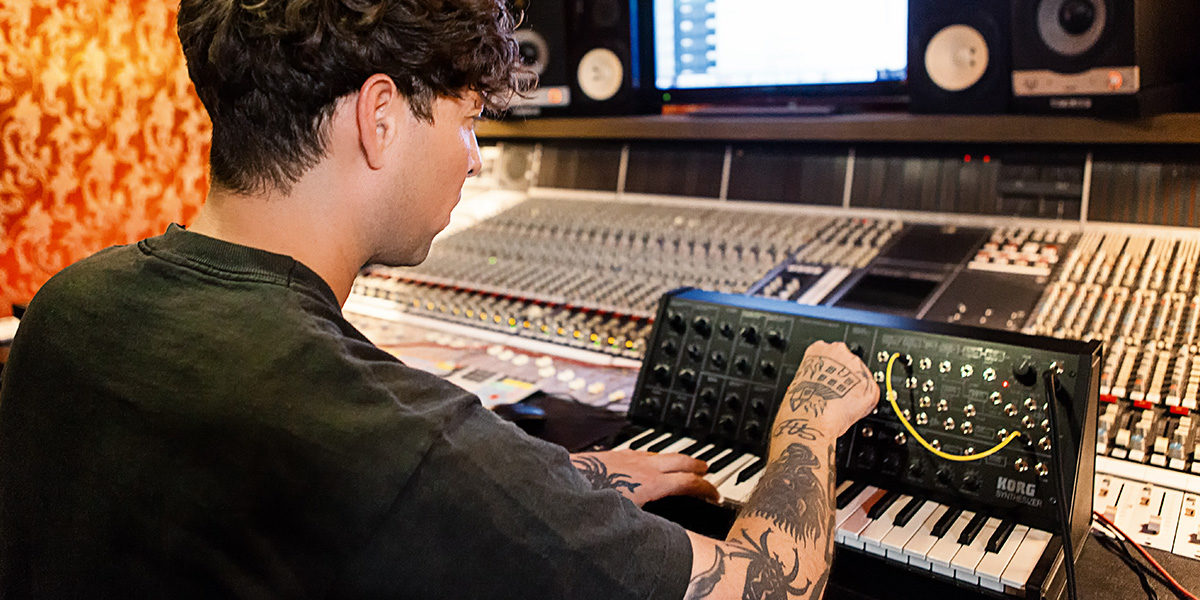
Your percussion sounds like an elegant mix of man and machine. What are your go-to drum machines, and how do you blend them into your mix?
I’m all over the place when it comes to applying drums in my music. I’ve never had just one approach, as it’s always been an area I’ve explored when personalizing my expression. I made the switch to using drum machines around 2008. It started out with an Alesis SR-16 which is a great drum machine for beginners. It sounded good enough that I used it on my first record. Later I purchased a LinnDrum, and a Roland TR-707, and a vintage 1980s Synsonics drum machine by Mattel that I believe was originally intended to be a toy for children. All three were used on Zeros. For Deeper I switched to a Dave Smith Tempest analog drum synthesizer which allowed me to further expand, creating more interesting drum sounds. The latest addition was a Vermona DRM1 MKIII which is by far the most intuitive for me personally and an instrument I can jump to at the height of an idea without losing any creative momentum. However, it doesn’t end with drum machines. Layering of acoustic drums, percussion, and field recordings play a large role. It’s a way to still keep things organic and biological. Man versus Machine.
What are you using for this next release?
Before I visit the studio to elaborate and expand on my music, the writing process starts out at home with a pretty basic recording home workstation setup: Ableton Live, Allen & Heath ZED-10 mixer, Apogee Duet 2 audio interface, a bunch of guitar effects stomp boxes (mainly choruses, flangers, phasers, and delays), a Dave Smith OB-6, MOOG Voyager, MOOG Subsequent 37, Vermona DRM1 MKIII, the Tempest analog drum synthesizer, SM57/58 mics, an array of Latin percussion instruments, a Fender Jazzmaster guitar, Fender Precision bass, and a Roland JC-120 guitar amplifier. At the studio in Italy we’re using an 80s SL6000 E console, a pair of EVE Audio SC208 studio monitors combined with a pair of Yamaha NS-10M studio monitors, Electro-Voice PL95A microphone for vocals, along with a Roland DEP 5 vocal FX, heavy use of various plug-ins and outboard effects, a Korg MS-20 synthesizer mainly used for creating synthetic drum sounds, and a large live room for tracking acoustic drums, and banging on metal objects.
Photo credits: Yvonne Hartmann








